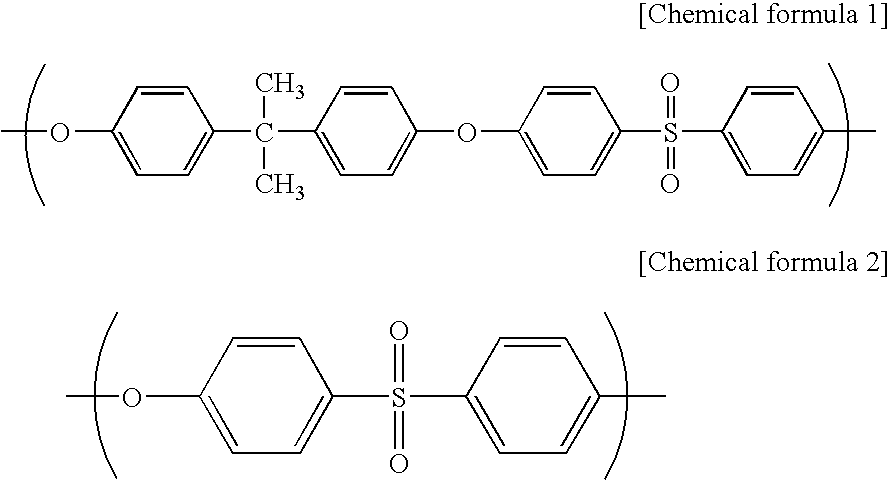Blood Purifier and Blood Purifier Package
a blood purifier and purifier technology, applied in the field of blood purifiers, can solve the problems of deterioration of selectively permeable separation membranes used in such a blood purifier, affecting the safety of blood purifiers used in hemocatharsis, etc., to achieve the effect of facilitating the manufacturing of selectively permeable separation membranes and reducing the thickness of such membranes
- Summary
- Abstract
- Description
- Claims
- Application Information
AI Technical Summary
Benefits of technology
Problems solved by technology
Method used
Image
Examples
example 1
[0071] A spinning dope was prepared from polyethersulfone (PES) (4800P, manufactured by Sumitomo Chemical Company, Limited) (17.5 mass %), polyvinyl pyrrolidone (PVP) (K90 manufactured by BASF) (3.5 mass %) as a hydrophilicity-imparting agent, water (1.0 mass %) as a non-solvent, triethylene glycol (TEG manufactured by Mitsubish Chemical Corporation) (31.2 mass %) and dimethylacetamide (DMAc manufactured by MITSUI CHEMICALS, INC.) (46.8 mass %). The spinning dope was extruded from the outer slit of a double spinneret maintained at 45° C., and water as an inner solution was extruded from the inner injection hole of the double spinneret. The resulting semi-solid hollow fiber was allowed to pass through an air gap with a length of 600 mm at a spinning rate of 60 m / minute, and was then dipped in a solidifying bath of 70° C. (DMAc:TEG:water=6:4:90). After that, the hollow fiber was washed with pure water of 45° C. for one minute followed by pure water of 80° C. for 90 seconds, and then w...
example 2
[0076] A blood purifier package was obtained in the same manners as in Example 1, except that the moisture content of the hollow fiber membrane bundle was decreased to 0.7 mass % by intensifying the drying of the hollow fiber membrane bundle, that the humidity of the internal atmosphere of a packaging bag was not controlled, and that a moisture release type oxygen scavenger was used. The results of the evaluation of the obtained blood purifier, which changed with time, are shown in Tables 1 and 2.
example 3
[0079] A blood purifier package was obtained in the same manners as in Example 2, except that the same general-purpose oxygen scavenger as that used in Example 1 was used, and that the blood purifier was sealed in a packaging bag together with a humectant which was obtained by sealing zeolite powder having adsorbed water in a humidity permeable packaging material. The results of the evaluation of the obtained blood purifier, which changed with time, are shown in Tables 1 and 2.
PUM
| Property | Measurement | Unit |
|---|---|---|
| RH | aaaaa | aaaaa |
| thickness | aaaaa | aaaaa |
| inner diameters | aaaaa | aaaaa |
Abstract
Description
Claims
Application Information
 Login to View More
Login to View More - R&D
- Intellectual Property
- Life Sciences
- Materials
- Tech Scout
- Unparalleled Data Quality
- Higher Quality Content
- 60% Fewer Hallucinations
Browse by: Latest US Patents, China's latest patents, Technical Efficacy Thesaurus, Application Domain, Technology Topic, Popular Technical Reports.
© 2025 PatSnap. All rights reserved.Legal|Privacy policy|Modern Slavery Act Transparency Statement|Sitemap|About US| Contact US: help@patsnap.com

